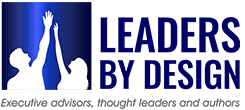When I wrote “Pothole to Whole City: Business/Community Leadership” back in 2011, I used what seemed like a small example: a single pothole in a busy neighborhood. But that pothole wasn’t just about damaged pavement. It disrupted access to schools, hospitals, businesses, transport hubs, supermarkets, and universities. It was a crack in the infrastructure that keeps a community — and by extension, its businesses — moving forward.
That metaphor has stayed with me because it reveals something bigger: nothing in leadership exists in isolation. When one part of the system breaks down, the effects ripple across the entire network. The same holds true for organizations. A small blind spot in leadership can lead to significant cultural and operational potholes — if we don’t address them early.
Similarly, in my more recent exploration of workplace bullying — co-authored with Molly Shepard — I highlighted how subtle, often hidden signs like high turnover, burnout trails behind “star performers,” silent meetings, micro-inequities, and whisper networks quietly corrode organizational health. Just as undetected infrastructure damage can cascade into systemic dysfunction, these discreet forms of interpersonal breakdown erode trust, resilience, and the capacity for innovation. Both metaphors point to the same imperative for leaders: vigilance, empathy, and proactive investment in the systems—be they physical, cultural, or relational—that sustain high performance and healthy organizations.
Emotional Strength and Empathy — Then and Now
In that article, I focused on two leadership traits:
- Emotional strength — the ability to project confidence while keeping humility intact.
- Empathy — the willingness to see the concerns of others as your own.
Those traits were important in 2011, and they’re even more critical now. C-suite leaders today face a web of interconnected challenges — from societal trust to supply chain vulnerabilities to shifting workforce expectations. Solving them requires leaders who can see the bigger picture, communicate across silos, and understand that success is tied to the well-being of the communities they serve.
Leadership Development as Infrastructure
If roads and bridges are the infrastructure of a city, then leadership development is the infrastructure of an organization. When we fail to invest in it, the cracks form quietly — disengaged teams, misaligned priorities, eroding trust — until suddenly, you’re swerving to avoid a full-blown crisis.
That’s why developing leaders with strong emotional intelligence, systems thinking, and stakeholder awareness isn’t optional. It’s a strategic imperative. And just as fixing one pothole benefits the whole city, investing in one leader with these capabilities can transform an entire organization.
The Executive’s Responsibility
For the C-suite, the lesson is clear: your leadership pipeline must be built for complexity, empathy, and collaboration. Technical skills alone won’t future-proof your business. We need leaders who understand that every decision they make is part of a larger system — and who are willing to take responsibility for the “roads” that connect their business to the broader community.
When leaders embrace this interconnected view, they stop thinking about problems in isolation and start building solutions that strengthen the whole. That’s how you turn a pothole into an opportunity — and a company into a catalyst for positive change.
As a C-suite leader, you deserve more than intuition—you deserve a confidential and research-driven coaching partnership that sharpens your strategic impact, amplifies your executive presence, and renews your leadership confidence.
Learn more about our Leadership Coaching and contact us for a confidential conversation.
Click here to read the original version of this article by Peter J. Dean published on Wharton Magazine.




